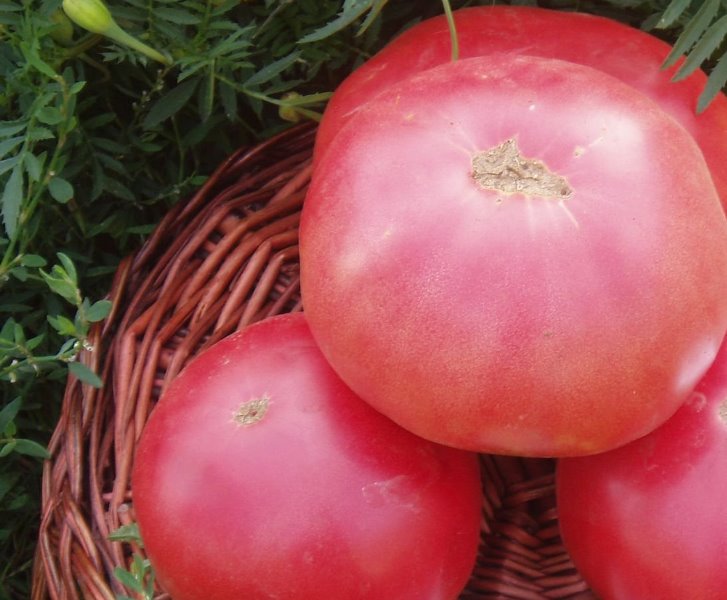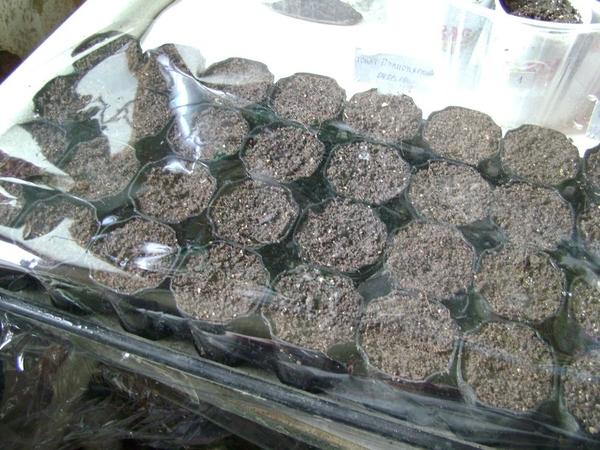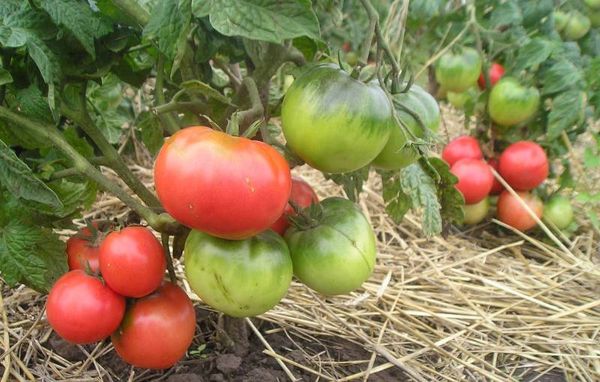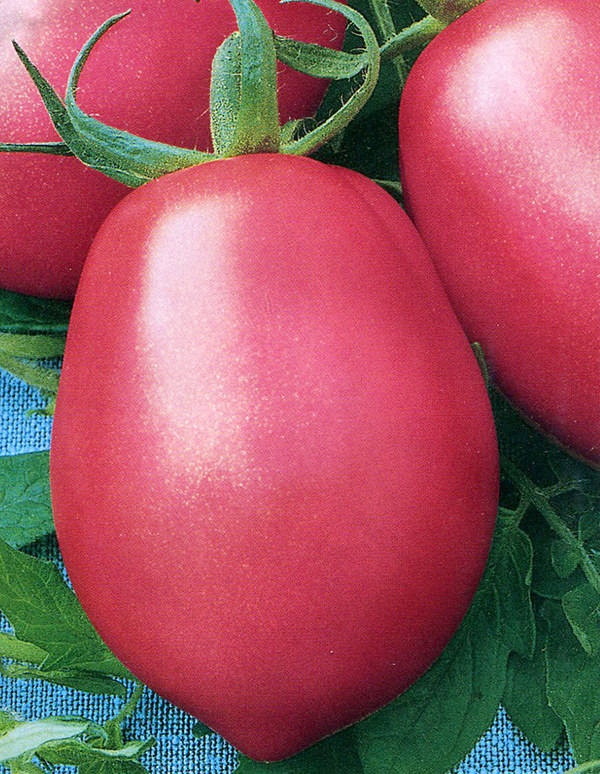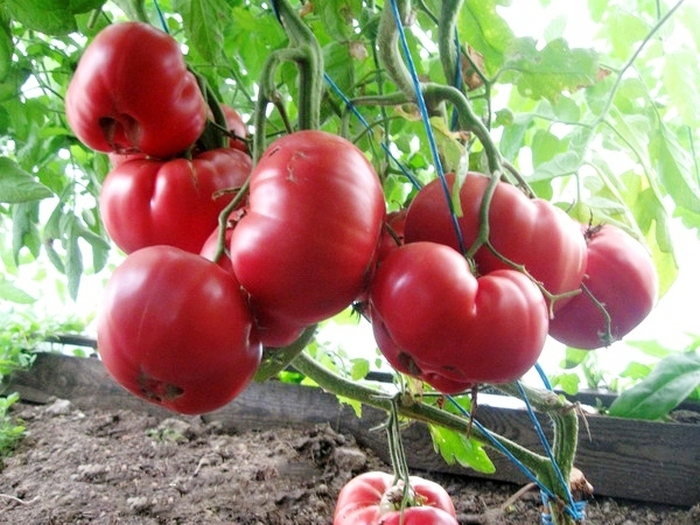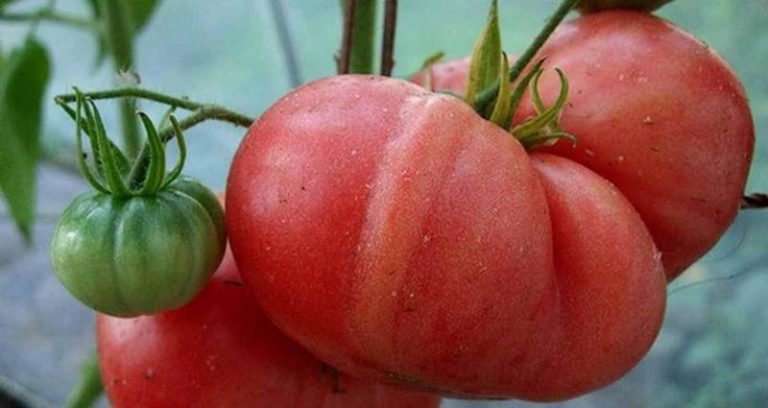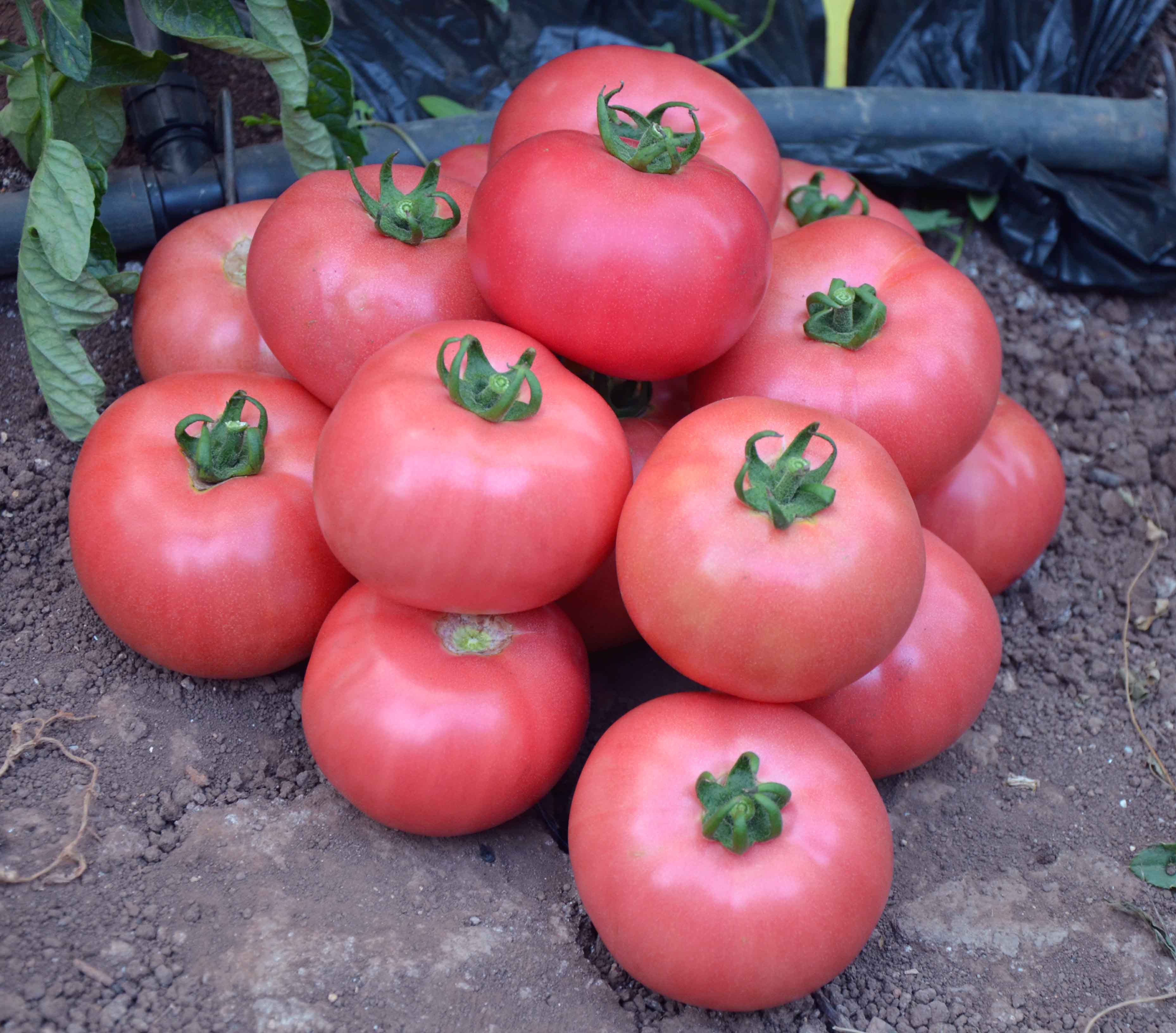Content:
The outlandish names of tomato varieties are largely associated with their bizarre shapes, not typical for fruit color or gigantic size. Among such masterpieces of domestic selection is not a young tomato Pink Elephant. Its history began in 1998, when breeders of Gisok-agro, a Moscow seed company, registered it in the State Register. So, this outlandish tomato entered the piggy bank of Russian hybrids.
So, consider the Pink Elephant tomato, presenting the characteristics and description of the variety in all agrotechnical and botanical details.
Main characteristics of the "Pink Elephant"
This vegetable, most likely, owes its name to its considerable size and pinkish tint. Breeders position this hybrid as multi-regional, that is, intended for planting in any region, except for industrial cultivation. Also in the description of the variety there is such a characteristic as a large-fruited variety for open ground. Greenhouse growing of elephant tomato is not excluded.
Let's present the main agricultural characteristics of the variety:
- Mid-season semi-determinant hybrid - ripening period of 110 days;
- Large-fruited - the weight of the fruit varies from 300 grams to a kilogram;
- Productivity - from +6 to +8 kg per square meter.
In general, the variety was developed as a salad variety; Elephant tomatoes are best eaten fresh.
Botanical description of the variety
Tomato bushes Elephant forms one or two main stems, rather high, the height reaches 1.5 -1.7 m, which requires garters and pinching. The bush is abundantly leafy, branches with potato-like dark green dense strongly tuberous leaves are located transversely on thick stems.
Fruits are formed on clusters of 2-4 pieces. The largest ones are concentrated at the bottom of the bush.
The fruit of the tomato The elephant is large, fleshy, has a flat-rounded shape, with a slight ribbing. The peel is pink in color with a small pale green spot in the area of the stalk. While dense enough with a slight glossy sheen, the rind is surprisingly not tough.
The pulp is also pink, sugary, with friability or granularity characteristic of large-fruited tomatoes, moderately juicy, without wateriness. The taste lacks the characteristic piquant sourness and pungency of a tomato. For this reason, the fruits of the Elephant seem too sweet to many. There are few seeds in a tomato.
Features of tomatoes
Among the key features of this hybrid, gardeners note versatility and productivity. So, regardless of the place of cultivation: greenhouse or soil, the volume of the crop remains unchanged.

This variety should be grazed earlier, in comparison with other tomatoes, and the lower leaves should be removed.
Another feature is a little trick of leaving, which consists in the fact that they should be pinned earlier, in comparison with other tomatoes, and also the lower leaves should be removed. The latter improves the quality of the crop.
As for the size of tomatoes, the largest are concentrated on the lower branches, closer to the top they become smaller. So that small fruits can also gain mass, the lower tomatoes that have begun to ripen are recommended to be removed and placed for ripening in a dark, dry place. It is better to use the traditional method and put them in felt boots, you can also put the tomatoes in cardboard boxes and put them in a thin felt.
This tomato also has its own culinary characteristics. So, it is not very suitable for canning.The peel, despite the fact that it is quite dense, cracks on large fruits when canned, and small tomatoes are not immune from this. This variety can be used for conservation only as part of lecho, Bulgarian salads. And the juices are thick and sweet. Suitable for making sauce and ketchup. Thanks to its smack, the hybrid was named Sugar Elephant - a very sweet tomato.
Another pleasant feature of the variety is that dense, fleshy fruits can be frozen. They do not emit much juice, while even after defrosting they retain a pleasant tomato aroma. Frozen tomatoes are suitable for sauces and vegetable stews, soups and pizzas. For pizza, it is better to freeze tomatoes in the form of rings.
Agrotechnics
Sowing tomato seeds Pink elephant should be in early March. They do not require special preparation; they can be kept in a manganese solution for no more than 15 minutes. This procedure applies to self-harvested seed. By the way, seeds harvested more than 2 years ago demonstrate the best germination.
It is better to sow immediately in separate pots, you can use peat ones. The soil is prepared from garden soil, humus, sand and ash.
Shoots should be expected no earlier than 7-12 days. For better germination, the pots can be covered with glass or foil.
Already at this stage, you can resort to hardening: leave the pots until shoots appear with a temperature of no more than 16 degrees, and then place the seedlings in a room with a temperature of 20-25 degrees.
Seedlings should be watered 2 times a week and only with warm water. You can add a little growth stimulant to it, for example, "Epina".
Before planting in the ground, it is necessary to harden the seedling material again, taking it outside in sunny warm weather for 5, then 7 and so on up to 15 minutes.
Advantages and disadvantages of the variety
When choosing a variety of tomatoes for growing in their summer cottage, almost all gardeners are interested in the strengths and weaknesses of the plant.
So, let's look at what exactly are the differences between the pink elephant hybrid tomatoes, its strengths:
- Large fruits;
- Productivity and amicable ripening of fruits;
- Easily transfers transportation and long-term storage;
- Resistant to pests and most fungal diseases, including late blight.
A number of agrotechnical advantages should also be noted:
- Seedlings emerge amicably and quickly, which is not typical for many varieties;
- Seedlings develop quickly and give color while still in pots;
- The seedlings are strong and take root well;
- After planting in the ground, one top dressing is enough at the growing season;
- Not particularly capricious in the vicinity of other plants.
The description of the variety will be incomplete, if you do not note a number of shortcomings that may seem insignificant to experienced gardeners:
- Growing a large-fruited hybrid is a laborious process, since the bushes require constant pinching, the formation of a stem, sometimes pruning, as well as the obligatory garter to the support;
- The hybrid is photophilous and thermophilic;
- Needs regular watering, after planting in the ground, this should be done daily;
- In a rainy summer, the lower leaves should be cut off, and the soil under the bushes should be mulched with straw or spruce paws, the latter, by the way, drive away pests;
- Large spreading bushes require stable supports, often trellises have to be built;
- It is difficult to grow a hybrid in a small greenhouse as it will be difficult to form a bush.
Experienced gardeners solve many of the described growing problems by choosing the right place for planting.So, it is possible to ensure the absence of drafts for a heat-loving hybrid if you plant it near fences and barriers, as well as on the south side of a house or other structure. At the same time, the proximity of the building will provide reliable supports, for example, when it comes to a wooden fence or a shed.
As for the fact that the tomato requires frequent watering, then you can simply choose a wet or even slightly marshy place, the main thing is that it is warmed up by the sun. A tall bush with a large root system will draw out all the moisture, and make the soil soft and loose, which will allow other plants to be planted in its place next year.
